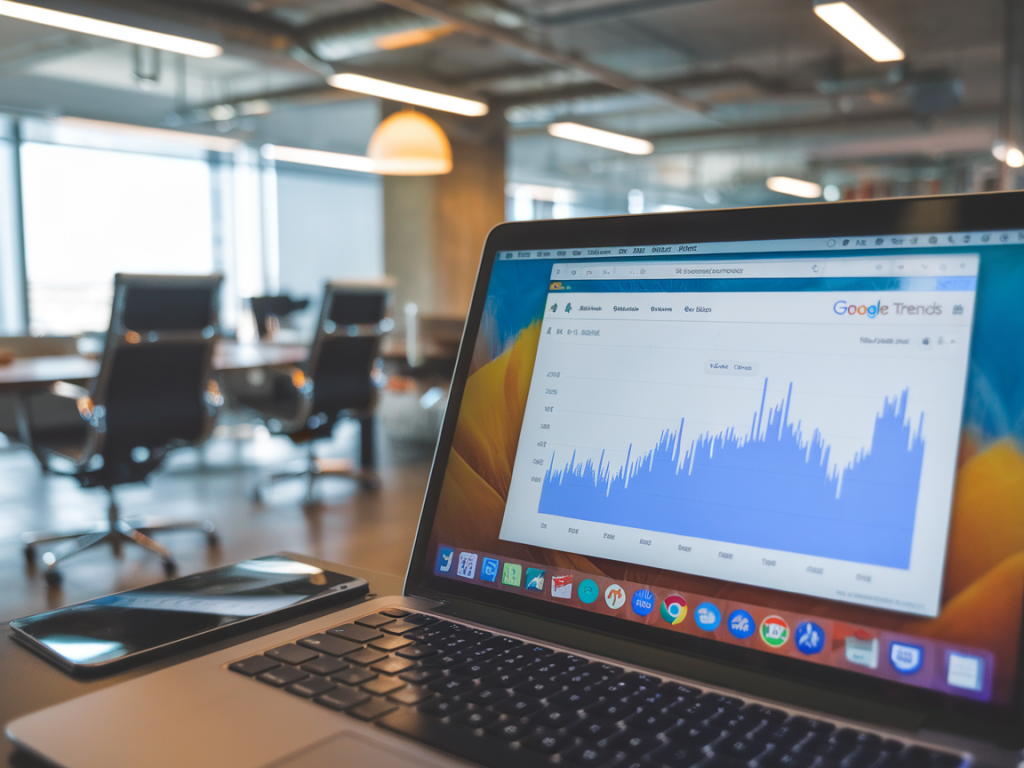
Understanding the Power of Google Trends
Google Trends is an incredibly powerful, yet often underutilized, tool for uncovering real-time market opportunities. Whether you're an entrepreneur launching a new product, a marketer crafting a campaign, or a business strategist seeking insights into consumer behavior, Google Trends offers valuable data at your fingertips.
As someone who lives and breathes data analysis, I often find myself recommending this tool for its simplicity and potential to unlock immediate insights. Google Trends enables you to explore what people are searching for, when they're searching, and where they're located. This knowledge can be the difference between a good strategy and a game-changing one.
Why Real-Time Data Matters
In today’s fast-paced, digitally driven world, timing is everything. The ability to react swiftly to market changes can determine whether you capitalize on an opportunity or miss out entirely. This is where Google Trends shines—it allows you to monitor trends as they happen. Whether it's a viral moment or a seasonal peak, having access to real-time data helps you stay one step ahead.
For example, imagine you're running a retail business, and you notice a growing interest in a niche product such as "sustainable travel accessories." By using Google Trends, you can track not only the increasing volume of searches but also key markets where interest is spiking. This could inform your inventory decisions, marketing efforts, or even product development strategies.
Using Google Trends for Market Research
Wondering how to get started? Here are actionable steps to leverage Google Trends effectively for market research:
- Analyze Search Volume: Google Trends lets you compare the popularity of search terms over time. This can help you identify whether certain topics or products are gaining or losing traction.
- Study Regional Interest: The tool provides geographic data showing where a search term is most popular. This is invaluable for regional marketing campaigns or location-based business strategies.
- Explore Related Queries: Alongside your main search term, Google Trends displays "related queries"—other popular searches people are performing. These can inspire content ideas or reveal adjacent opportunities in your market.
For instance, if you're a digital marketer researching keywords for a client in the fitness industry, entering a broad term like “home workouts” into Google Trends might reveal a surge in queries related to “resistance band exercises” or “HIIT workout plans.” These insights could shape your ad copy, blog topics, or social media content.
Spotting Seasonal Trends
Seasonality plays a significant role in consumer behavior, and Google Trends helps you understand cyclical patterns. By monitoring when searches for specific keywords peak during the year, you can plan your marketing calendar accordingly.
Take, for example, industries like retail or travel. Terms such as “Christmas gift ideas” or “island vacations” see predictable spikes during holiday seasons. By knowing when interest surges, you can optimize ad spend, launch campaigns at the right moment, or prepare your inventory to meet demand.
Last year, a startup I consulted with noticed a spike in searches for "DIY home improvement kits" at the beginning of spring. Using Google Trends, we identified this as a seasonal trend tied to warmer weather. Armed with this data, they launched a spring-targeted ad campaign that significantly boosted their sales.
Tracking Emerging Trends and Opportunities
One of the most exciting features of Google Trends is its ability to highlight emerging trends. The "Rising" search query feature shows search terms that are rapidly gaining popularity. This can alert you to early-stage trends before competitors catch on.
For instance, during the height of the pandemic, businesses noticed a sudden surge in searches for "virtual team-building activities." Those who acted quickly by creating relevant tools and services were able to capture an entirely new market almost overnight.
If you're in e-commerce, monitoring these emerging trends can guide inventory decisions. For example, noticing a rise in "compact fitness equipment" might prompt you to stock products like resistance bands or foldable treadmills. The quicker you identify and act on these trends, the better positioned you’ll be to serve your market.
Optimizing Content Marketing with Google Trends
Content creators and bloggers can also use Google Trends to craft highly relevant, timely content. By identifying what audiences are searching for, you align your content strategy with their interests, thereby increasing engagement and traffic.
Suppose you run a blog about personal finance. Using Google Trends, you might notice an increase in searches for "crypto investment for beginners" during a cryptocurrency boom. Creating an in-depth guide on that topic not only meets a specific audience need but also improves your chances of ranking higher in search engine results.
Additionally, pairing Google Trends data with tools like Answer the Public or BuzzSumo can help you refine your content topics and identify the exact questions people are asking online. This adds even more precision to your strategy.
Comparing Competitor Data
Ever wonder how your brand stacks up against competitors? Google Trends allows you to perform head-to-head comparisons of search terms. By analyzing how your brand performs relative to others, you gain insights into your market positioning.
For example, if you're running a clothing brand and your main competitor’s name generates significantly more search interest than your own, it might be time to revisit your branding or marketing strategy. On the other hand, if you see spikes for specific product categories like "eco-friendly denim," it could indicate there’s room to carve out a niche in that space.
Adapting to Current Events
Lastly, one of the lesser-discussed but immensely impactful use-cases for Google Trends is responding to current events or external circumstances. With global events influencing consumer behavior in real-time, keeping an eye on trends related to your industry ensures your strategy stays relevant.
For instance, during recent economic uncertainties, searches for terms like "budget-friendly meals" or "secondhand furniture" increased dramatically. Businesses that pivoted their messaging or services to cater to these needs were able to capture attention and build goodwill with their audience.

